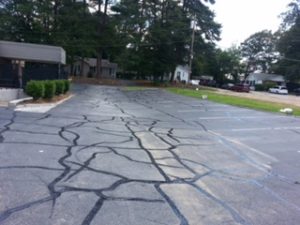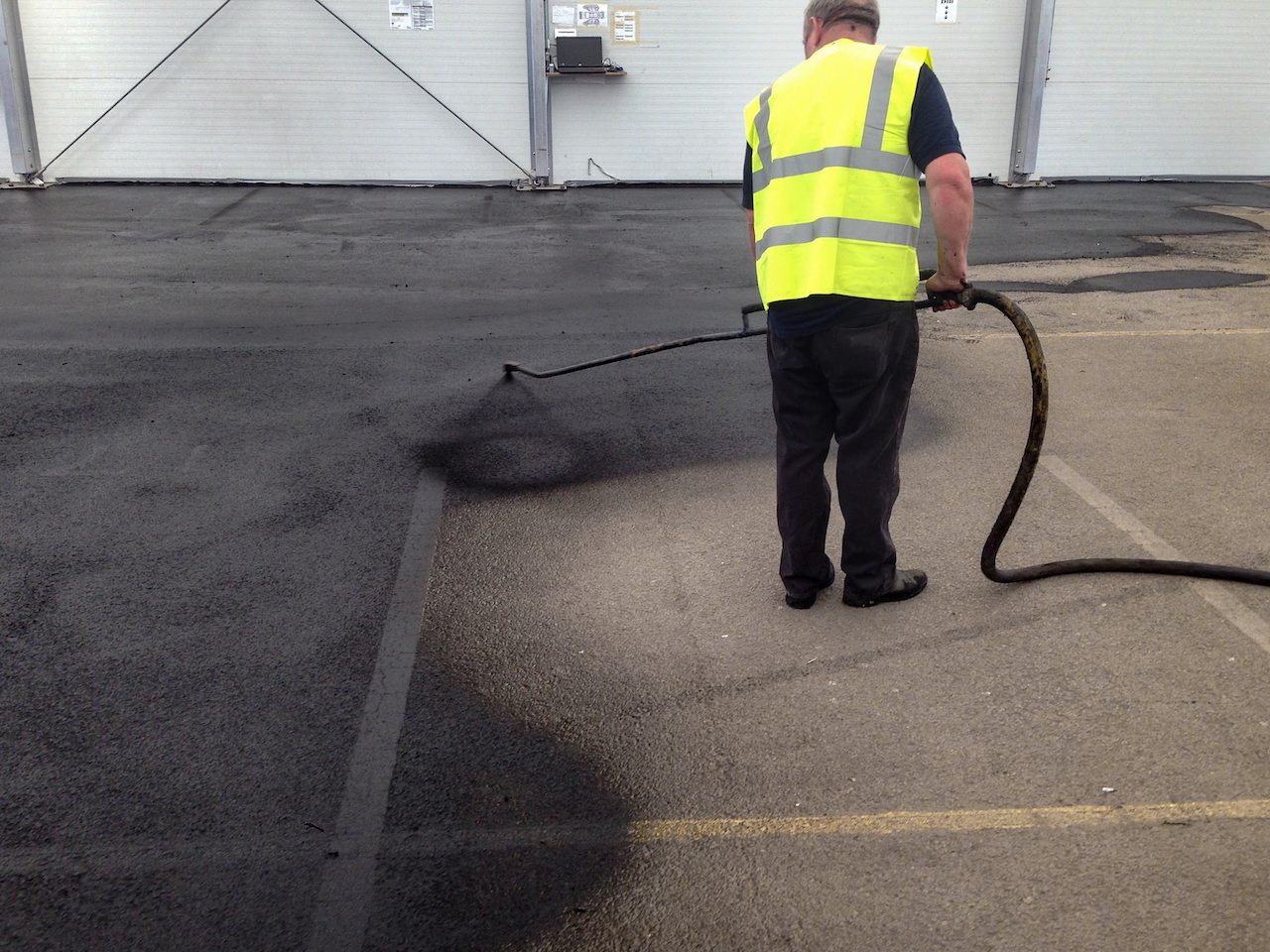
Asphalt Crack Sealants – Hot & Cold
Cold Sealants
As their name implies, cold-pour crack sealants are not heated before they are poured. They are delivered to the site as liquids that are ready for immediate use.
• Cold-pour sealants have a life that can be measured in months. Therefore, they are considered a temporary repair.
• Cold-pour sealants become rigid after they cure, so they cannot contract or expand when temperatures fluctuate.
• Cold-pour sealants cannot form a strong bond to the surrounding pavement, so even a slight change in the ground temperature can break the bond, leaving a gap that can allow water to penetrate.
• Cold-pour sealants may contain little or no asphalt, but they always contain a great deal of water that must evaporate during the curing process. Since evaporation becomes more difficult as temperatures fall, cold-pour sealants are usually not an option between late autumn and late spring.
• Cold-pour sealants can be forced from the crack the first time that the ground freezes. This leaves the crack unprotected and increases the risk of water penetration.
• Cold-pour sealants are unsuitable for repairing deep or wide cracks.
• Cold-pour sealants are more commonly used for repairing cracks in residential driveways than for repairing cracks in parking lots or thoroughfares.
Hot Sealants
Hot-pour crack sealants arrive at the site as solids that must be melted before pouring. This means that the process will require more time and equipment than the cold-pour method.
• Hot-pour sealants can be used to repair cracks that are deeper and wider than those that can be addressed with a cold-pour sealant.
• Hot-pour sealants remain flexible and are able to endure the freeze/thaw cycle far better than cold-pour sealants.
• Hot-pour sealants can be applied in cold weather as well as hot weather.
• Hot-pour sealants bond to the pavement better than cold-pour sealants, reducing the likelihood of gaps or displacement.
• Hot-pour sealants contain much less water than the cold-pour varieties, so the evaporation process is less critical.
• Hot-pour sealants last longer than cold-pour sealants. A repair made with a hot-pour sealant can last up to 10 times as long as a similar repair made with a cold-pour sealant. Therefore, although the initial expense may be a bit higher for a hot-pour sealant, over time, it is virtually always more economical.
MH Greeson Paving is an asphalt maintenance and asphalt sealcoating company based in Marietta, GA. We offer a wide range of services, including crack repair, sealcoating, parking lot striping, asphalt repair, traffic sign installation, pavement marking, bollards and car stops. We have impeccable references and are known for delivering exceptional work at affordable prices. To request a free estimate, simply submit our online request form or call (770) 335-2983.




